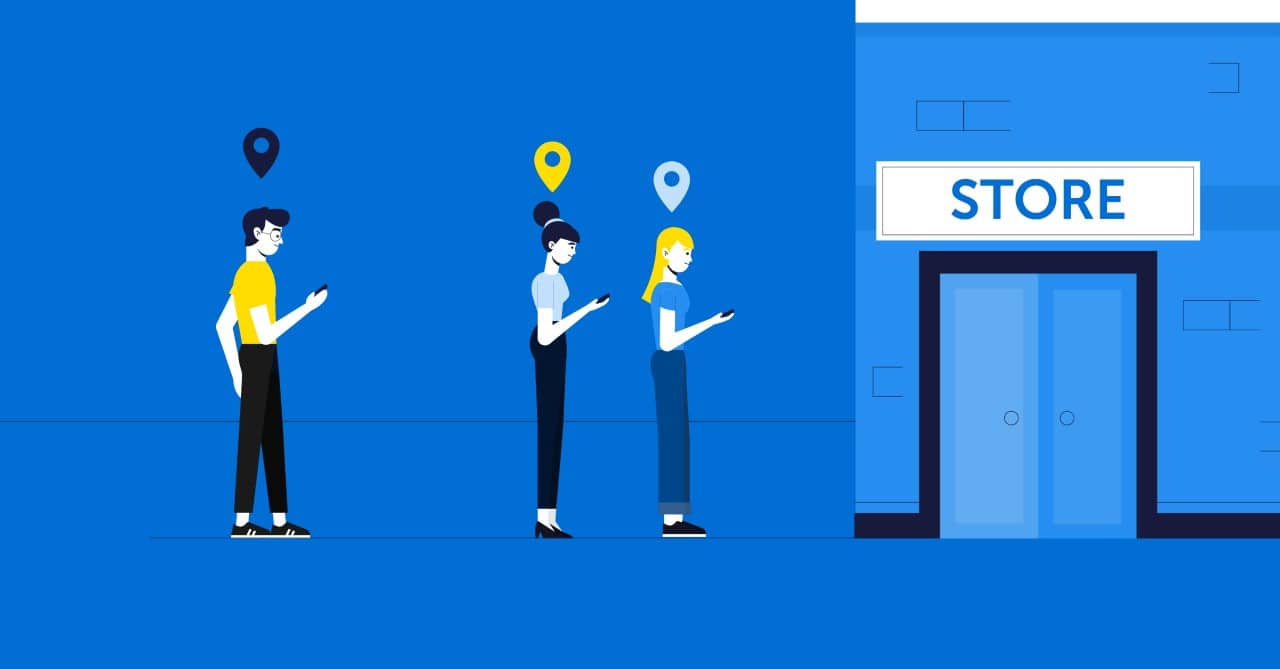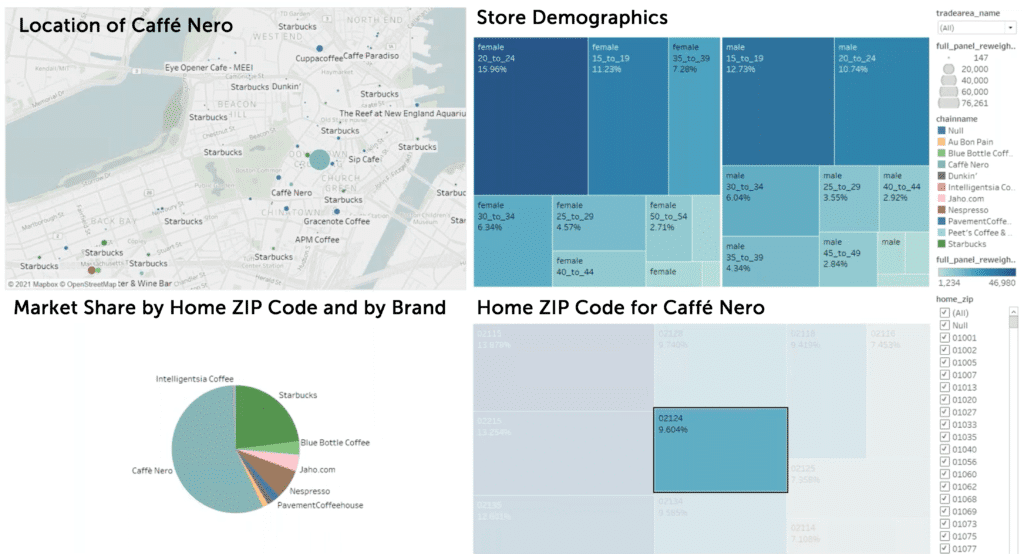How to Use Foot Traffic Data to Gain Store Performance
August 5, 2024

What defines retail success? Brand? A great product? Or is it something else, like location and convenience? Retail Managers will probably tell you it’s a combination of all those things. However, achieving that success daily is the biggest challenge for franchise managers. The solution lies in finding a successful model that can be replicated over time.
For consumer brands, today’s omnichannel balance presents its own set of challenges. While e-commerce offers convenience, there remains a distance between the brand and the customer. Getting potential customers to interact with the product at a brick-and-mortar store is often the best way to build trust.
So, how do you measure customers’ attraction to your best retail stores and keep them coming back? It requires more than just intuition; it demands analytics to understand store performance and develop a model for repeat success. This entails understanding local demographic characteristics, competitive impacts, and the introduction of a relatively new type of location data: retail foot traffic data.
How Is Foot Traffic Data Collected?
Discover how traffic data is collected to help retail businesses.
People Counters
Today, we carry mobile devices on which we use apps for weather, map directions, and checking the local news. These apps collect location-based data, anonymize it, and sell it to advertisers. These “breadcrumbs” of data allow advertisers to understand how people move and interact with their surroundings. One significant data point provided by mobile devices is how often we visit a retail store and how long we stay at that location. The combination of very specific location information and dwell time provides retailers and brand managers with key insights into the attractiveness of their goods.
Wi-Fi and Bluetooth Tracking
Wi-Fi and Bluetooth tracking systems detect and track mobile devices as customers move through the store. These systems offer a non-intrusive way to gather detailed foot traffic data, helping retailers understand customer movement patterns and dwell times.
Tracking high-accuracy data such as Wi-Fi and Bluetooth connections can help to collect more and more foot traffic data.
Video Analytics
Video analytics use cameras and software to analyze customer movement and behavior within the store. This technology provides visual insights into how customers interact with the store layout and products, allowing retailers to optimize their space for better customer flow and product placement.
Why Use Retail Foot Traffic Data?
Foot traffic data is referred to as “ground truth.” The data is an actual measurement of the frequency of visitor traffic (or visitation traffic), not an approximation. This data can reveal when and how many people travel past your brick-and-mortar establishment. While the “who” is anonymized, the demographic, social status, and ethnic affiliation of the “who” can often be deduced.
Enhanced Customer Experience
By analyzing foot traffic data, retailers can identify bottlenecks and optimize store layouts to improve customer flow and satisfaction. Understanding how customers move to the store helps in creating a more enjoyable shopping experience.
Targeted Marketing
Foot traffic insights allow retailers to tailor marketing efforts based on peak shopping times and customer demographics. This data helps in crafting targeted campaigns that reach the right audience at the right time, providing a high quality geomarketing for your business.
Performance Measurement
Retail foot traffic analytics provide a clear picture of store performance, helping businesses make data-driven decisions to boost sales. By measuring foot traffic against sales data, retailers can understand the effectiveness of their marketing strategies and store operations.
Operational Efficiency
Understanding foot traffic patterns enables retailers to optimize staffing levels and reduce operational costs. By aligning staff schedules with peak traffic times, stores can ensure they have the right number of employees to serve customers efficiently.
Use Foot Traffic Analytics to Understand Store Performance
Foot traffic analytics can help you understand way better store performance and gain insights about it. The role of traffic data is not to be underestimated.
Visitor Count
The visitor count metric shows the total number of visitors entering the store. This data helps retailers understand overall store traffic and identify trends over time. High visitor count indicates strong customer interest and effective marketing efforts.
Dwell Time
Dwell time refers to the average time visitors spend in the store. Longer dwell time can indicate higher customer engagement and satisfaction. Analyzing dwell time helps retailers identify areas of the store that attract more attention and improve customer retention strategies.
Conversion Rate
Conversion rate is the percentage of visitors who make a purchase. This metric is crucial for understanding how effectively a store converts foot traffic into sales. Retailers can use this data to refine their sales strategies and improve product offerings.
Peak Hours
Identifying peak hours helps retailers understand the busiest times of the day or week. This information is valuable for optimizing staff schedules, planning marketing campaigns, and managing inventory levels.
Example of Foot Traffic Data Use for Retail
The example in the following graphics illustrates how one coffee shop, Caffe Nero, in the Boston, Massachusetts area, has performed. In the first figure, footfall data can detect the preponderance of females aged 20–24 and males aged 15–19 as the predominant demographic in the store’s ZIP Code, 02124, in which it also holds the dominant market share among all coffee shops, including Starbucks. The demographics suggest a younger cohort than perhaps would have been expected but allows the retailer to ask other questions regarding both location and its product offering.

In the second graphic, the data can be sliced by time of day (by the hour) and by day of week. It shows both the moving average of daily traffic and the dwell time at the store. Taken together, these data illustrate the target market most likely to frequent the store, the time of day they arrive, and how long they spend at the store.
The result is optimized marketing efforts and a better understanding of how to target each segment of the market and when, for example through social media. Here also, footfall data will support merchandizing since the time of day when most of the traffic is recorded can help define the amount and type of food service to deliver for improved customer experience.

At this point, the retailer can stitch together a more complete understanding of the pedestrian traffic that defines the clientele. From here, Caffe Nero could decide to expand into other areas and use its existing location as an analog model to predict success at other proposed locations. Or they can look to expand sales at the existing location by targeting other times of day or days of the week with a different product mix that is more appropriate to a different demographic audience.
Get Help for Your Foot Traffic Analysis
Mobility data such as vehicle traffic data and foot traffic data is becoming a vital tool in the retail industry. As a result, to remain competitive, retailers need to become more informed about what kind of data will best support their business objectives. This data provides a level of detail that is invaluable in trying to gain a competitive edge.
Korem’s expertise, whether it’s helping select the best vehicle and foot traffic data source—such as detailed historical daily traffic (DHT)—, preparing and delivering the data, or deploying visual dashboards for a common operating picture, is unsurpassed.
Why don’t you try our traffic data? Get your free trial now!





